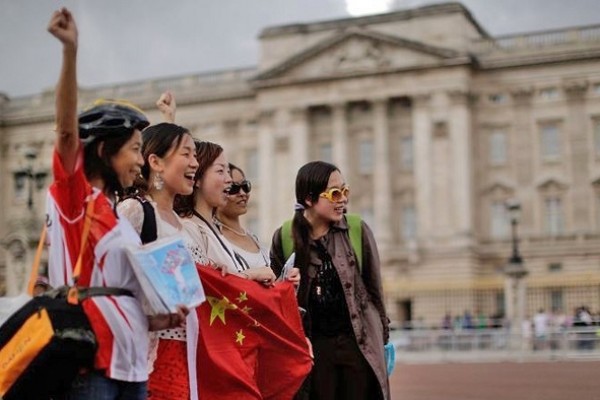| Chinese tourists swarm to Europe to explore uncharted places, culture | |

| Author: CSEBA / Xinhua |
| 12th September 2018 |
| PARIS - From the well known Champs-Elysees in Paris to the bustling Croatian town of Dubrovnik, throngs of Chinese tourists continue to descend onto Europe this year. |
|
With the China-European Union Tourism Year having kicked off in January in a bid to boost people-to-people exchanges between the two sides, more Chinese tourists set out towards Europe by plane, by sea, and by land. Eight months in and the numbers are astounding. Researches by the European Travel Commission (ETC) and ForwardKeys, a global travel data firm, reported that in the first four months of this year, Chinese arrivals in Europe were up 9.5 percent against the same period of last year, and up 7.9 percent for the May-August season. When compared with the rest of the world, Europe is gaining in market share, as the comparable worldwide figures for Chinese arrivals were 6.9 percent up for the first four months and 6.2 percent up for May-August. Tourism officials from eastern China's Shandong province told Xinhua that in the first quarter of the year the province of over 100-million people saw 30 percent more trips to Europe. As traditional destinations in western Europe, such as Britain, France and Germany, remain the favorites among Chinese tourists, less-charted spots are gaining traction. Su Xiaolin, a tour operator from Shandong, recently led a group across Roussillon, Gordes and St Paul-de-Vence, relatively unfamiliar places compared to Marseille or Aix-en-Provence in the same Provence-Alpes-Cote d'Azur region in southern France. "These niche places were just previously not on our radar," Su told Xinhua, referring to a trend that Chinese group tours to mature destinations in western Europe are becoming increasingly "boutique." "Central and eastern Europe steals the show, with bookings currently 32.5 percent ahead of last year. It is followed by southern Europe, 28.5 percent ahead," ForwardKeys said in a research on EU-China tourism in June, naming Ukraine and Hungary as big winners. In a recent report, the ETC said that "Serbia and Montenegro in particular have reported some significant growth compared to the same period a year ago, as too have Cyprus and Croatia." According to the local tourist board, Dubrovnik, the southern Croatian town known as the shooting place of Game of Throne and Star Wars, saw a 37-percent increase in Chinese tourists this summer. To better welcome surging Chinese tourists, Croatia invited China to join its "safe tourist season" project, which brings foreign police officers to Croatia every summer to handle tourism-related cases in cooperation with local counterparts. "The project enhanced communication between Chinese tourists and Croatian police. We did a very good job together," Velimir Tisma, head of prevention unit of the police department in Zagreb, the capital of Croatia, told Xinhua. A recent United Nations World Tourism Organization report found that Chinese tourists continue to be big spenders, dropping 258 billion U.S. dollars on international tourism in 2017, representing almost one-fifth of the world's total tourism spending. For European economies, especially those that rely heavily on tourism, attracting Chinese tourists is on higher agenda. In Greece, which just exited the European Union bailout program, tourism has been a traditional pillar of the economy for decades and is expected to be one of the powerful growth engines in the post-bailout era, Greek Tourism Minister Elena Kountoura told Xinhua. Statistics from Greek tourism authorities show that 110,000 Chinese tourists visited the country in 2017, a 35-percent increase from 2016. Their arrivals this year are expected to increase by another 50 percent from 2017. "Tourism is a top priority for our government. It is the driving force for the Greek economy and we have enhanced tourism's role as a powerful engine for growth. Tourism represents more than 20 percent of our GDP and about one million jobs creating new sources of income and employment," Kountoura said. Olivier Jager, CEO of ForwardKeys, said that the tourism year "looks set to be a resounding success." While Europe has seized the opportunity to boost visitor flows due to stable ties with China, the United States appears to losing attraction, Jager said. "Tourism is the largest category of U.S. services exported to China, and it did not remain untouched," ForwardKeys said. At the end of the year, Chinese bookings to the United States are expected to be down by 9.6 percent, compared to the same period of last year, while Chinese outbound bookings worldwide are ahead 5.5 percent, according to the travel consultancy firm. Tourism is a lot more than money, numbers and shopping, as China and the EU are eyeing enhanced cultural understanding and people-to-people bonds through the tourism year. Chinese tourists, who used to spend lavishly on luxury goods, are now more interested in European culture and experience. Colmar, once an ambiguous town in northeast France, saw more Chinese visitors after a popular Chinese reality TV show was shot there. With no big brands, its attractions are largely half-timber houses, museums, neighborhoods and sauerkrauts. Zhang Bei, who recently returned to China after touring Italy, Monaco and France, spent her last day in Paris, but she did not go to French chain store Printemps or Galeries Lafayette. "I just sat on the side of the Seine for hours," Zhang said. "Thinking what life would be like here." |
 |
|
| 23rd November 2024 | |
| China has good news for Croatian citizens | |
 |
|
| 7th November 2024 | |
| Pelagos net farm products presented at the Shanghai fai | |